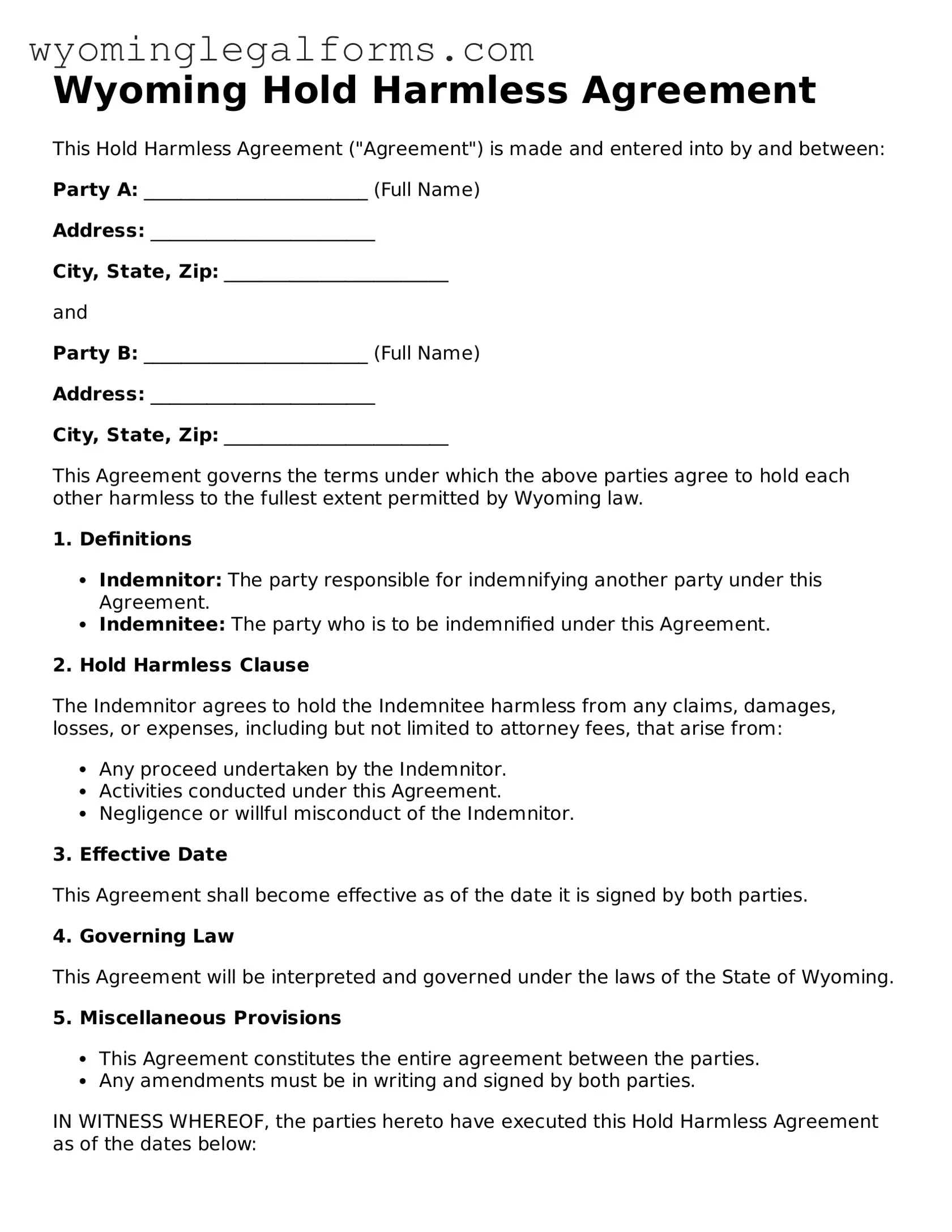Wyoming Hold Harmless Agreement
This Hold Harmless Agreement ("Agreement") is made and entered into by and between:
Party A: ________________________ (Full Name)
Address: ________________________
City, State, Zip: ________________________
and
Party B: ________________________ (Full Name)
Address: ________________________
City, State, Zip: ________________________
This Agreement governs the terms under which the above parties agree to hold each other harmless to the fullest extent permitted by Wyoming law.
1. Definitions
- Indemnitor: The party responsible for indemnifying another party under this Agreement.
- Indemnitee: The party who is to be indemnified under this Agreement.
2. Hold Harmless Clause
The Indemnitor agrees to hold the Indemnitee harmless from any claims, damages, losses, or expenses, including but not limited to attorney fees, that arise from:
- Any proceed undertaken by the Indemnitor.
- Activities conducted under this Agreement.
- Negligence or willful misconduct of the Indemnitor.
3. Effective Date
This Agreement shall become effective as of the date it is signed by both parties.
4. Governing Law
This Agreement will be interpreted and governed under the laws of the State of Wyoming.
5. Miscellaneous Provisions
- This Agreement constitutes the entire agreement between the parties.
- Any amendments must be in writing and signed by both parties.
IN WITNESS WHEREOF, the parties hereto have executed this Hold Harmless Agreement as of the dates below:
Party A Signature: ________________________
Date: ________________________
Party B Signature: ________________________
Date: ________________________
